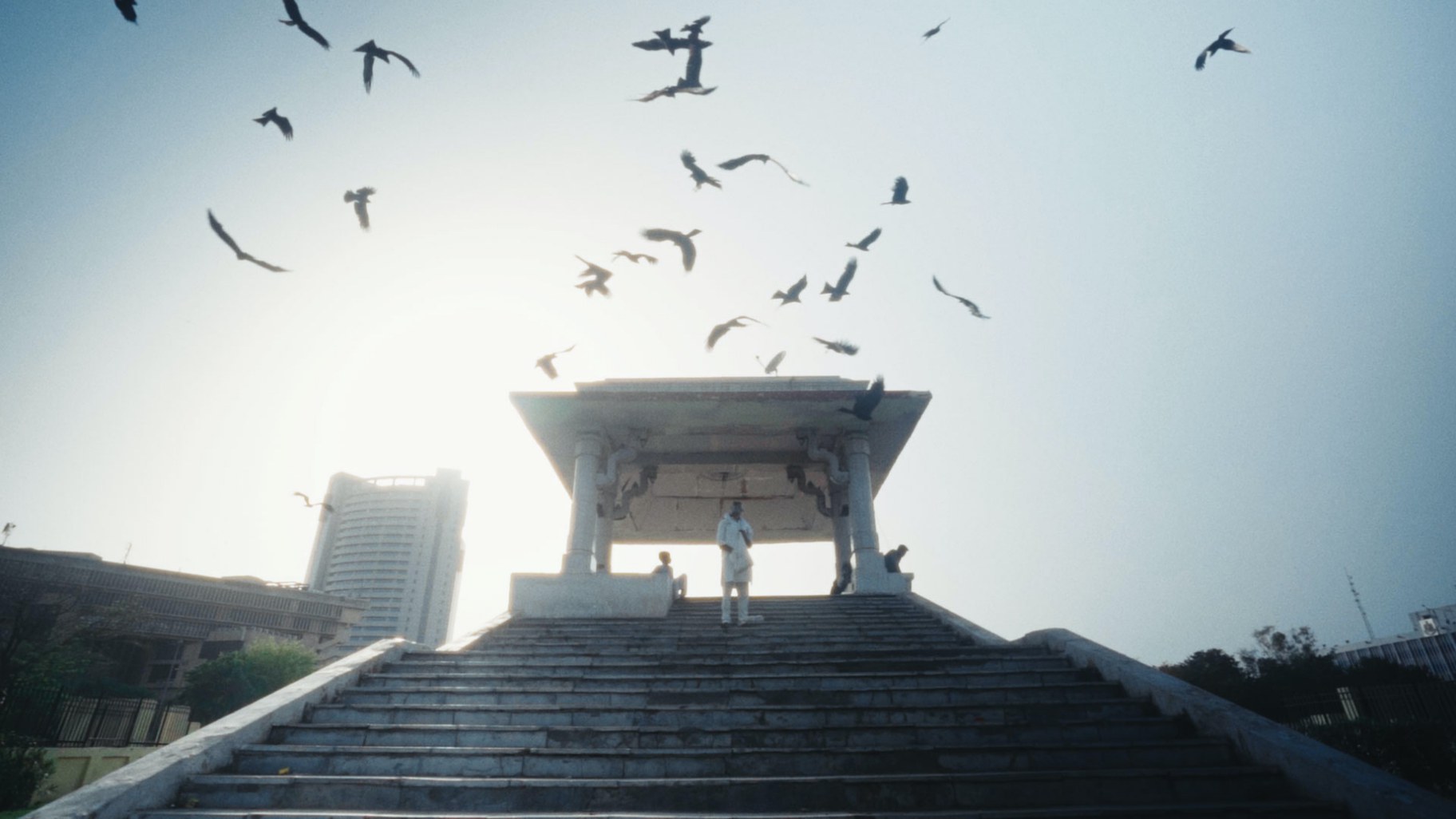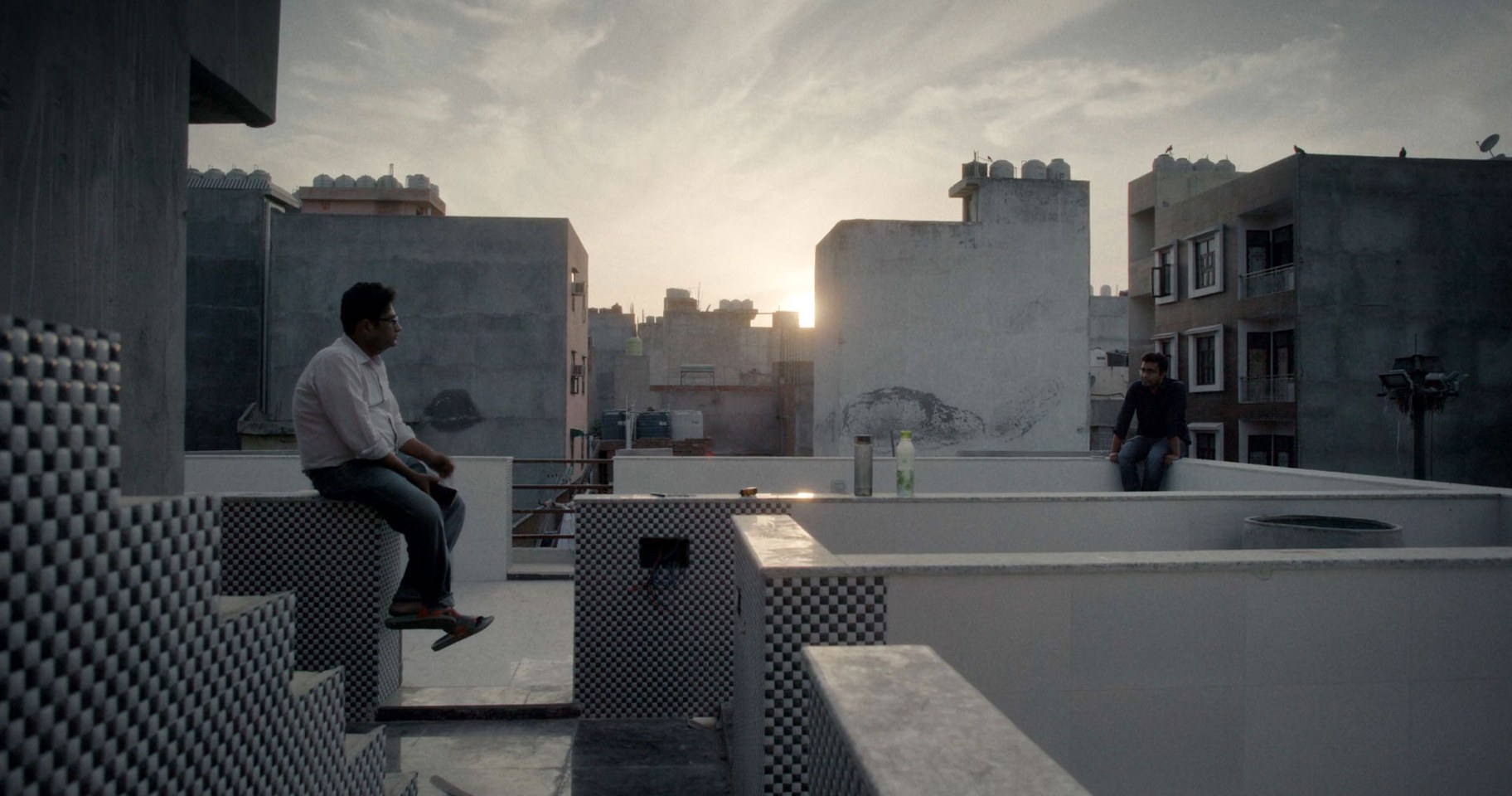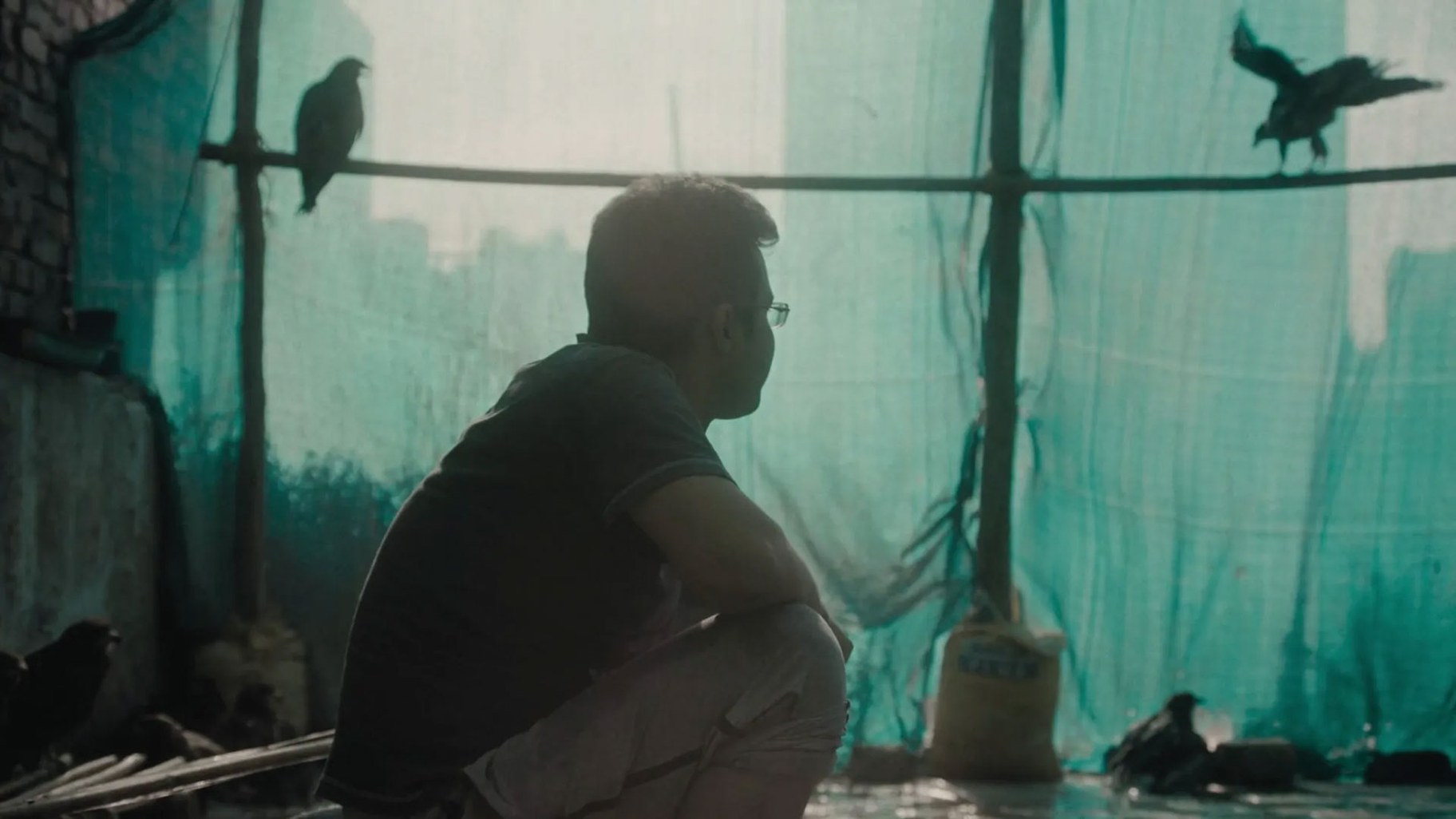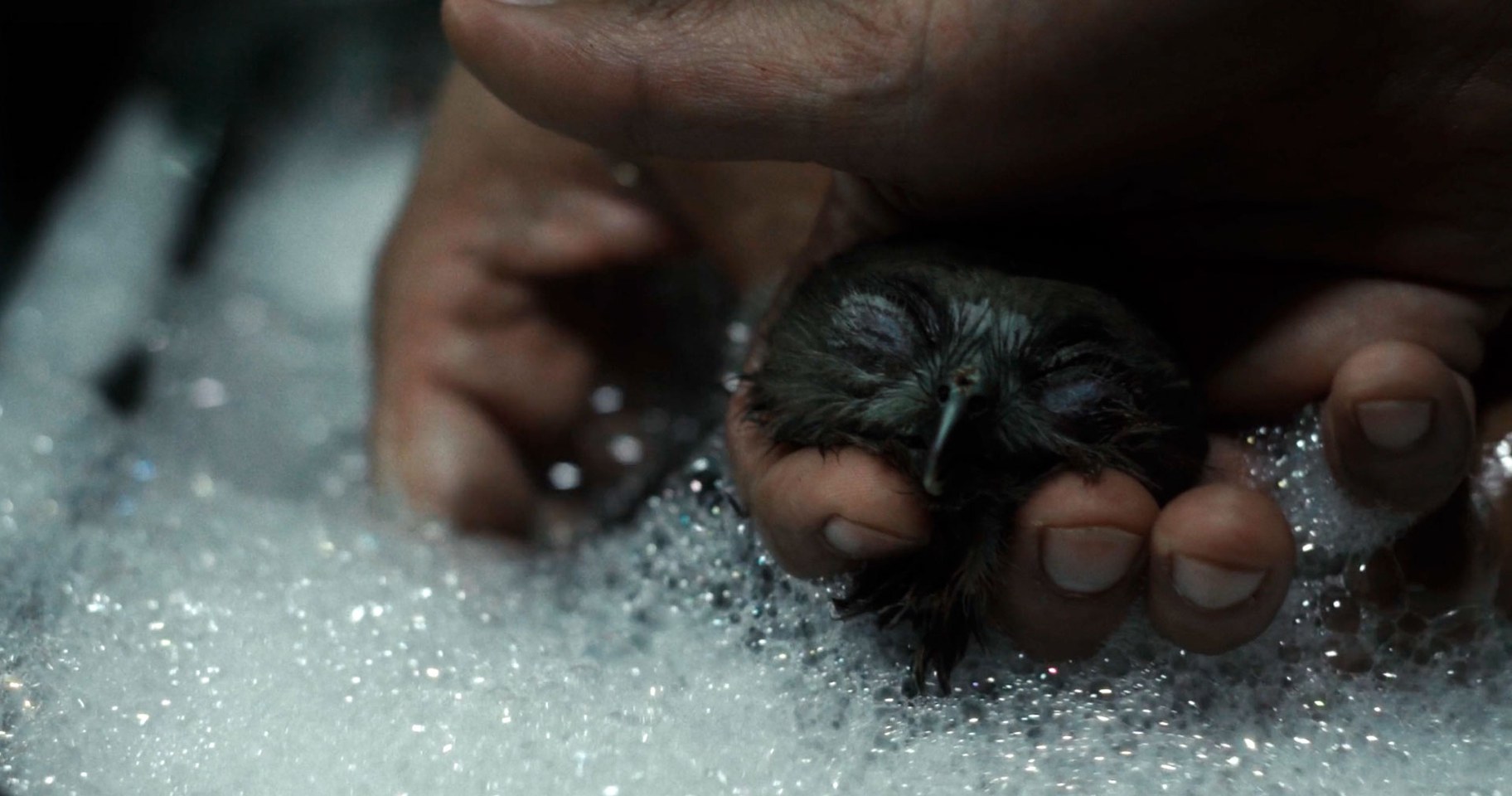While Shaunak Sen was at Cambridge University’s ERC Urban Ecologies project as a visiting scholar in 2018, he was housed with other fellows who were working with “non-human issues.” As such, he was influenced by “a whole litany of excellent avian-related prose, fiction, nonfiction or poetry,” in books such as: “Grief is the Thing with Feathers by Max Porter, “H is for Hawk” by Helen Macdonald, and “The Peregrine” by J. A. Baker.
“That was really the cloud of ideas that is the broader conceptual forcefield around me,” he explains. “Observing the birds only came in the wake of the great literature that I was often reading at the time.”
The Indian filmmaker, who was not a bird watcher then, went back to New Delhi and was inspired to learn more about the black kite, a bird of prey essential to the Indian ecosystem.
“The picture postcard of Delhi is this dystopian gray, monochromatic sky, especially in the winters, where you have these tiny black dots in the sky – the black kites that are lazily gliding off,” he points out.
After seeing a video of a black kite sky dropping, he one day Googled “Where do birds that fall [from] the sky go to?”
“It started as a kind of abstract triangulation between air, birds and humans,” he explains. “That was vaguely the web of things that I was interested in,” and a “moment of encounter between birds and humans.”
He became particularly interested in two things: “in the air…a kind of gray, opaque, almost creepy sentience – I was interested in that kind of a texture of life in the city [in] all laminating grayness. And I was interested in thinking of the city through the lens of non-human life.”

Meat tossing, as depicted in "All That Breathes." Feeding birds of prey in the city is believed, by Muslim practitioners, to eat away the sins of the feeder. Photo courtesy of Rise Films.
One way to approach the documentary was to film people who fed them. Instead, Sen found the story of two brothers – Mohammad Saud and Nadeem Shehzad – who set out to rescue and rehabilitate black kites throughout the city.
“The other way is to look at this kind of slightly perverse moment where birds are falling off and in this one claustrophobic, tiny basement, these two brothers are like Don Quixotes, just soldiering on,” says Sen. “I was fascinated by their story, by what it allowed me to talk about in a more zoomed out, bigger sense, and also [by] the sheer poetry of it.”
He adds, “I was very interested in why they do what they do, but to not make something that was a conventional nature doc or a wildlife doc. Not to make something that was just a sweet film about nice people doing good things, but a kind of ecological, emotional and socio -political history of the city and the state of affairs in Delhi, through the relationship of this one remarkable family.”
In his new film, “All That Breathes,” amid environmental toxicity and social unrest, Sen takes his camera inside Nadeem and Saud’s makeshift avian basement hospital in one of the world’s most populated cities. There, the brothers, and their assistant Salik Rehman, devote their lives to save, care, and protect the black kites, who have been falling from New Delhi's polluted sky at alarming rates. The film explores the connection between the kites and the Muslim brothers, through a mesmerizing chronicle of inter-species coexistence.
Rescuing 25,000 birds
Sen explains that in the past 15 years, the brothers have rescued some 25,000 raptors off of their own volition and have done it fairly unsupported. “What they do is singular and remarkable from this tiny, small decaying, grubby basement.”
On any given day the brothers may find a staggering 25-30 birds who have fallen down, though in three years of shooting the film Sen has only seen one black kite drop.
“It's not like, if you look up every now and then a bird pops down. That's not how it is.”
However, the filmmaker says New Delhi is big, so his film shows only “one pocket of the city.”
“Cities of Sleep”
This is not the first time the filmmaker brings attention to his hometown. In his 2015 debut documentary “Cities of Sleep,” Sen looked at New Delhi through the lens of sleep. In it, he takes audiences into the world of insurgent sleeper’s communities and “sleep mafia,” where a large number of unsheltered people seek a safe sleeping spot every night around Delhi.
“That [film] was looking at the city through the lens of sleep. [‘All That Breathes’] is looking at the city through the lens of non-human life, particularly, the bird life,” he explains. “In a way, if the previous one was about the horizontal axis, this one started emerging in my head to the vertical axis.”
Challenges of making “All That Breathes”
Sen encountered several obstacles while filming. One was with the brother’s media savviness. They learned to give “small bite size interviews” that didn’t work for the creative and observational nature of the documentary.
“I had to try and break them out of that,” Sen explains. “The main ambition is to get a sense of everyday, quotidian, banal mundaneness. That's where characters are, instead of behaving in front of the camera.”
In order to achieve that, he says he “had to wait for the first yawn.”
“You have to wait for characters to reach a point of boredom with the camera where it's not an obtrusive presence. I am not an obtrusive presence. They're aware of me, but they're also not self aware enough to change their behavior.”

Brothers Nadeem Shehzad, left, and Mohammad Saud sit on a building’s rooftop in the documentary “All That Breathes.” Photo courtesy of Rise Films.
Sen also had to drop the first eight months, or two hard drives of footage. “It sounds heroic and romantic in hindsight, but I had no other option then…It had to be done.”
That’s because when he started shooting they were using handheld cameras for a more classic verité, rough style, but that gave the film a tone of anxiousness and restlessness.
“I realized that the characters were themselves very contemplative and meditative folks, and the film had to have a form that allowed you to contemplate things and think about things, and it had to be beautiful,” he notes.
He then moved “into a more tripoded, flowy kind of style.”
Another challenge was shooting during the 2020 Delhi riots. Some of the unrest was happening next to the brother’s house, but because they are not politically-minded, Sen decided to keep his camera focused in his subjects, and to keep the integrity of the film, he gave “obliquely and tangentially” hints of what was happening without making the riots front and center.
“The outside world would often leak in, in small resonances and small murmurs [into the film],” he explains: “So a character goes to the balcony, and you hear the audio of a crowd nearby, or the character is watching a video of clearly trouble in the city, and you only hear the audio of it.”
The production also took place during the height of the COVID-19 pandemic in India with Sen catching “a very bad case of it.” It also forced the production to shut down for long stretches of time and one of the directors of photography had to leave urgently, which disrupted their shooting schedule midway.

Mohammad Saud watches black kite birds while they rehabilitate in the documentary “All That Breathes.” Photo courtesy of Rise Films.
At the same time, Sen believes the time off helped him change the film’s tonal quality.
“When you recede into the inner confines of your house with nothing outside, life takes on a more somber meditative quality generally, so I think it helped me ingest and marinate in footage,” he reflects.
Working with Charlotte Munch Bengtsen
Once the footage was assembled, Sen traveled with his co-editor Vedant Joshi to Denmark to meet film editor Charlotte Munch Bengtsen. He had seen her work in films like “The Act of Killing” and “The Truffle Hunters,” which inspired him.
But she had a completely different style or approach to the material. “I tend to be very, perhaps too cerebral and interpretative and top heavy, whereas she prescribes to what she calls an emotional edit,” Sen explains. “That's something that I really learned and imbibed via her.”
He adds, “It's a kind of stomach editing, which I just hadn't ever experienced, and I think the film was infinitely richer because of this.”
Financing his projects
It took Sen three years to shoot and edit “All That Breathes,” which was financed through various sources, including grants and by Tangled Bank Studios. He also met Teddy Leifer of Rise Films, which prepared him to pitch to different doc incubation labs.
For his latest film, Sen says he “hit the sweet spot” with financing. However, that was a lesson he learned early on: to distinguish between good and bad money because “money is almost never without a caveat.”
For him, it was important to have some “autonomy and creative sovereignty… especially if it's not a formulaic film that is easy to pitch,” he explains.
“Ultimately, it's everybody's loss if the film does not come out as the best version of itself, and therefore, you have to listen to the smaller, tiny voices in your head, which gets difficult if you don't have contractual autonomy.”
Academy Award for Best Documentary Feature
At just 24 years old, Sen has made two critically acclaimed feature-length documentaries. His latest “All That Breathes” was shown virtually at the Sundance Film Festival where it won the World Cinema, Documentary award.
Then, it physically “premiered” at Cannes, which doesn’t have an independent documentary section, so Sen’s film was presented in the mix with other fiction features, and won the Golden Eye award.
“It was a very unique, and personally for me, almost a euphoric experience because a lot of my auteur heroes were showing at the same time,” he affirms.
In total, “All That Breathes” has won 19 awards, and has 39 nominations, including an Academy Award for Best Documentary Feature.
“Given how we started and where we began, this is the kind of galaxy that is entirely unfathomable, honestly, to us,” says Sen. “Of course, it's difficult to wrap one's head around it. We're obviously beside us, as with relief and joy.”

A black kite getting bathed in “All That Breathes.” Photo courtesy of Rise Films.
With the accolades, Sen has received offers for other projects.
“The change is so monumental, that I can't even tell how much the coordinates of my life have indeed shifted,” he says. “I come from a world which is very, very far away from all of this, not just in terms of the glitz and the bells and whistles, but also in terms of pure visibility of the films I make. So this all feels almost unreal, to be honest.”
But when the award season is over, Sen says he’ll take a break.
“What I need to do after the whole dizzying upheaval of the Oscar campaign gets done, I will unplug and go off somewhere remote for two to three months, and slowly start excavating or mining ideas again and thinking of what do you want to do next.”
“All That Breathes” is now streaming on HBO.
